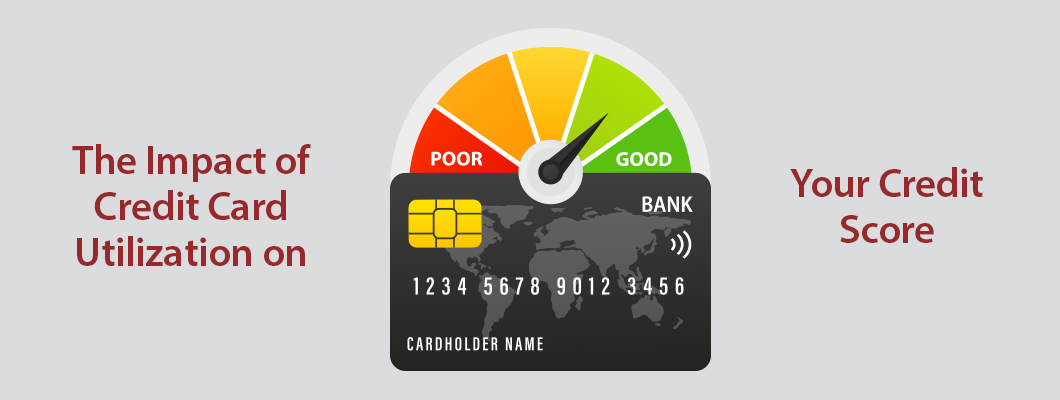
The Impact of Credit Card Utilisation on Your Credit Score
Posted on Monday, August 21st, 2023 | By IndusInd Bank
Do you know how much of your available credit you are using on your credit cards? If not, you may be missing out on one of the most important factors that affects your credit score. Your credit score is a number that reflects your creditworthiness, that is, how likely you are to repay your debts on time. It is based on various factors, such as your payment history, the amount of debt you owe, the length of your credit history, the types of credit you have, and the number of new credit inquiries you make.
One of these factors is your credit card utilisation, which is the ratio of your outstanding credit card balances to your credit card limits. It measures how much of your available credit you are using at any given time.
Why does this matter? Because your credit card utilisation reflects how well you manage your finances and how dependent you are on credit. A high credit card utilisation indicates that you are spending more than you can afford and may have trouble paying back your debts. This can lower your credit score and make it harder for you to get approved for loans, mortgages, or other forms of credit in the future.
On the other hand, a low credit card utilisation shows that you are spending within your means and have enough financial cushion to handle emergencies or unexpected expenses. This can boost your credit score and make you more attractive to lenders and creditors.
So, what is a good credit card utilisation rate? And how can you manage it effectively? Here are a few suggestions to help you out.
What Is a Good Credit Card Utilisation Rate?
There is no definitive answer to what is a good credit card utilisation rate, as different scoring models may have different thresholds and preferences. However, a general rule of thumb is to keep your credit card utilisation below 30% on each card and across all cards.
This means that if you have a total credit limit of ₹1 lakh across all your cards, you should not have more than ₹30,000 in outstanding balances at any point in time.
Keeping your credit card utilisation below 30% can help you maintain a good credit score and avoid paying high interest charges on your balances. However, this does not mean that you should never use more than 30% of your available credit. You can use more than that as long as you pay off your balances in full by the due date every month.
How to Manage Your Credit Card Utilisation?
Managing your credit card utilisation is not difficult if you follow some simple tips and strategies. Here are some ways to keep your utilisation low and improve your score:
- Pay off your balances in full every month: This is the best way to avoid paying interest and fees on your cards and keep your utilisation low. You can also pay more than once a month or make multiple payments throughout the month to reduce your balance before it gets reported.
- Increase your credit limit: If you have a good payment history and a low debt-to-income ratio, you can request an increase in your credit limit from your card issuer. This will increase your available credit and lower your utilisation rate. However, do not use this as an excuse to spend more than you can afford or apply for too many new cards at once.
- Use multiple cards wisely: If you have more than one card, you can spread out your spending across them and keep each card’s utilisation below 30%. However, do not open too many cards just to increase your total limit or use them for unnecessary purchases. This can hurt your score by lowering the average age of your accounts and increasing the number of hard inquiries on your credit report.
- Use a balance transfer: If you have a high-interest card with a high balance, you can consider transferring it to a low-interest card with a higher limit. This can help you save money on interest and lower your utilisation rate. However, be careful of the fees and terms involved in a balance transfer and make sure you can pay off the transferred amount within the promotional period.
- Monitor your credit report: You should check your credit report regularly to ensure that your credit card balances and limits are reported accurately. If you find any errors or discrepancies, you should dispute them with the credit bureaus and the card issuers as soon as possible. This can help you avoid any negative impact on your score due to incorrect information.
If you are looking for a credit card that can help you manage your credit card utilisation and improve your credit score, you should consider applying for an IndusInd Bank credit card. IndusInd Bank offers a range of credit cards that cater to different segments of customers, from premium to super premium, from lifestyle to travel, from rewards to cashback. Each card comes with unique benefits and features that can help you achieve your financial goals.
To apply for an IndusInd Bank credit card, visit the link below and get instant approval.
Disclaimer: The information provided in this article is generic in nature and for informational purposes only. It is not a substitute for specific advice in your own circumstances. Hence, you are advised to consult your financial advisor before making any financial decision. IndusInd Bank Limited (IBL) does not influence the views of the author in any way. IBL and the author shall not be responsible for any direct/indirect loss or liability incurred by the reader for taking any financial decisions based on the contents and information.



 Offers
Offers Rates
Rates Debit Card Related
Debit Card Related Credit Card Related
Credit Card Related Manage Mandate(s)
Manage Mandate(s) Get Mini Statement
Get Mini Statement
 categories
categories Bloggers
Bloggers Blog collection
Blog collection Press Release
Press Release


